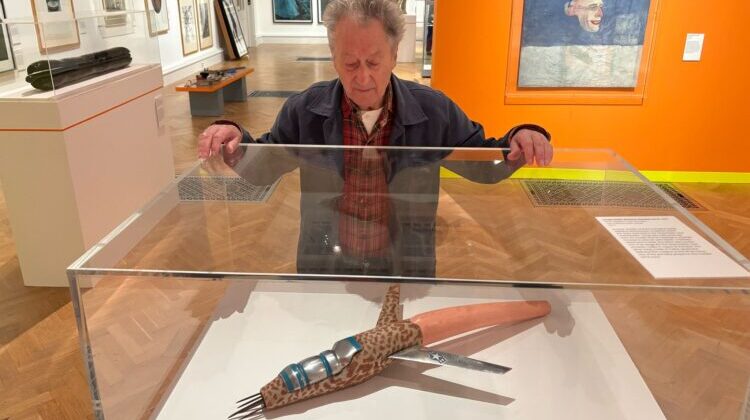
A major retrospective of Colin Self, one of the UK’s most unpredictable and brilliant artists, opens at Norwich Castle Museum & Art Gallery on Saturday. Folk Features heads to the preview of this vital figure in Norfolk’s long history of artistic creativity.
Colin Self is best known for his Pop Art, but a new retrospective at Norwich Castle Museum & Art Gallery reveals the breadth of his work spanning six decades. One Self: The Creative Life of Colin Self is the first major exhibition of this remarkable artist in 17 years, containing 130 works of art. It celebrates the boundless creative spirit of an artist whose rare openness means that art history, literature, mythology, pop culture, nature and found objects all occupy the same space in his imagination. Encompassing his famous early work as a pivotal figure in the Pop art movement of the 1960s, the stunning collection charts his subsequent artistic course, showcasing some of his lesser-known work, with many works on display for the first time.
Created in close collaboration with the artist and his wife, Jess, and only on show at Norwich Castle Museum & Art Gallery, citations on the walls above his art speak to the high esteem to which he is held in the artistic world. Sir Peter Blake, David Hockney and Marianne Faithful are among those quoted.
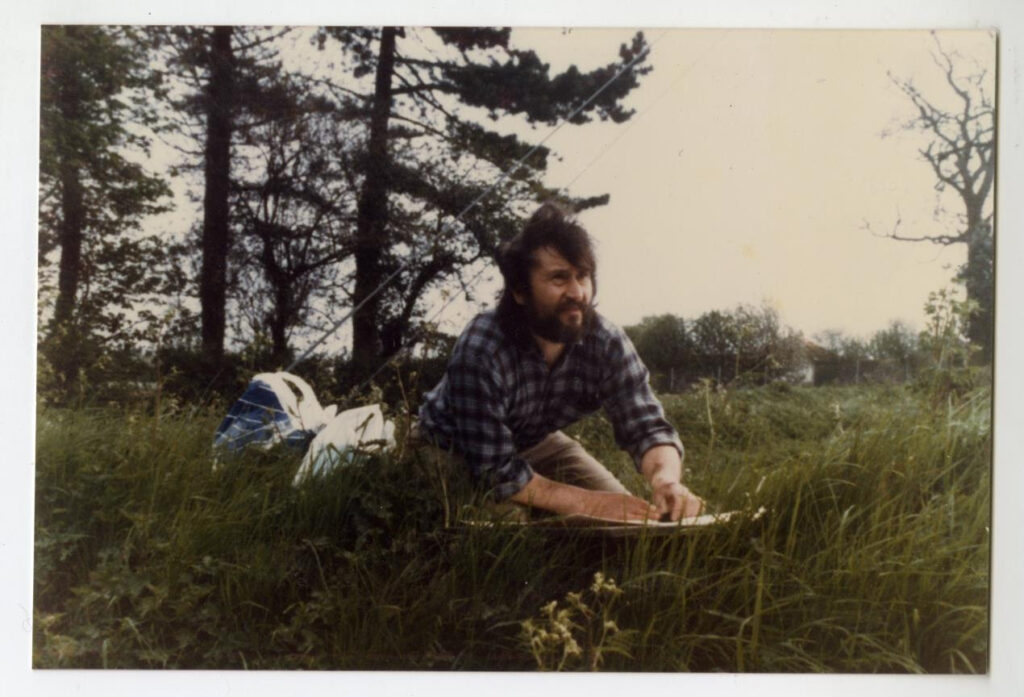
Born on July 17 1941 in Rackheath, Norfolk, the first of nine children of Kathleen and Ernest Self, Colin obtained a scholarship to attend Wymondham College: a National Diploma from the Norwich School of Art and a scholarship to study at the Slade School of Fine Art. He first came to international prominence as a Pop artist in the 1960s with powerful works reflecting on the Cold War and nuclear threat. Since then, he has created an extensive body of work which includes painting, drawing, printmaking, collage, sculpture and ceramics.
Colin’s earliest artistic encounters were with paintings made by Italian prisoners of war interned on the outskirts of Norwich, brought home by his father, a house and sign painter who worked at the camp. As a young boy he also discovered the paintings of the Norwich School artists on a trip to Norwich Castle – a seminal moment in his life which sparked a life-long admiration for the landscapes of John Crome (1768-1821) and John Sell Cotman (1782-1842).
With this exhibition, Colin’s artistic life comes full circle, presenting examples of his work from throughout his career next to the galleries where paintings by the Norwich School artists he continues to admire are still on display.
Drawing on the Castle’s collection of Colin’s work, with additional loans from Tate, Pallant House Gallery, Leeds Art Gallery and private collections, curators have worked closely with the artist and his wife to select the works, providing a personal insight into his extraordinary career – from his time as a student at the Slade School of Fine Art in the early 1960s to the present day.
There is a particular emphasis on his less well-known work from the 1970s onwards when – disillusioned with the London art scene – Colin retreated into the British countryside, finding solace in his home county of Norfolk. Colin recalls: “I got a job at Norwich Art School, which is where I met Jess. My mum just went, ‘it’s nice you’ve got a proper job’.”
Looking around the gallery space, he says: “I am thrilled to have such an extensive exhibition at Norwich Castle – it’s the first place where I saw art on the walls as a young boy with my uncle Arthur, and it made me wonder, ‘Can people really do this for a living?’”
“I didn’t know people could do it for real. You’d think they must do their job and bike home and get their paints out and then they would be allowed.”
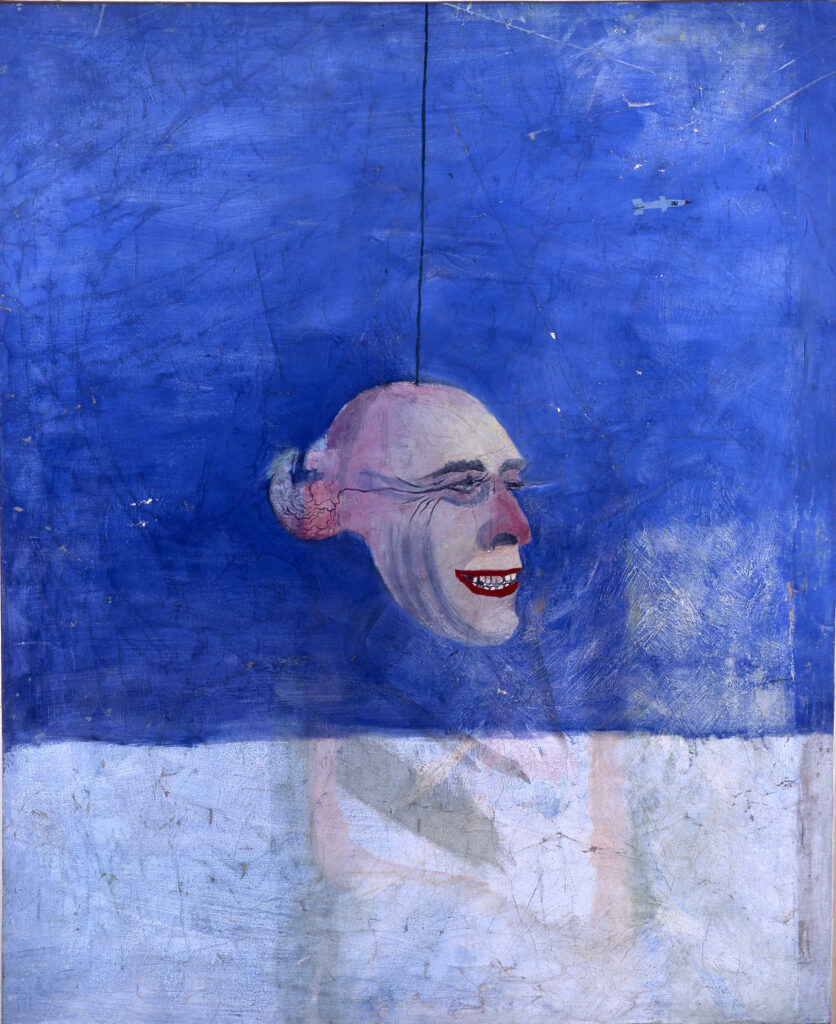
Arranged into six sections, the exhibition follows Colin’s idiosyncratic career. It begins with his best-known work from the 1960s with his images of nuclear bombers encapsulating the age of nuclear anxiety in which he grew up. His brilliantly disturbing oil painting from 1962 ‘Humanity Hanging by a Thread’ (which gives this section its title) is an undoubted highlight, alongside his earliest, ground-breaking, multiple plate etchings using discarded metal as plates.
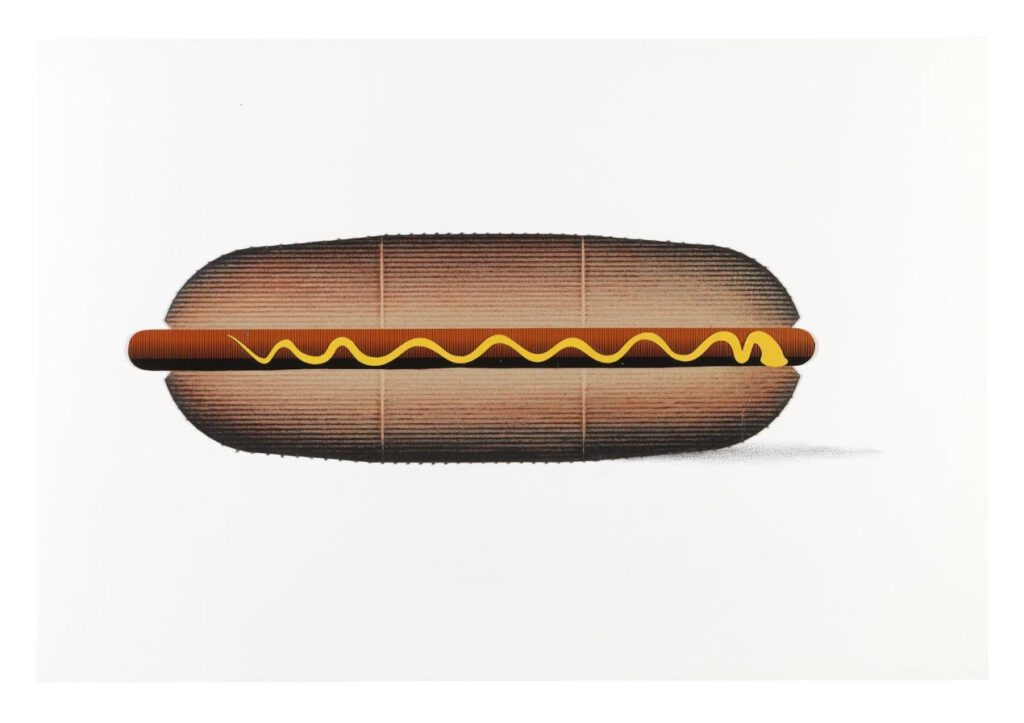
In the second section, Was it All a Dream?, his large Power and Beauty screen-prints from the late 1960s play with scale and colour with powerful and uncanny results, conveying something of the feverish nature of mid-century consumerism. His images of hot dogs revisit the American culture he experienced on trips to the US, Canada and Mexico in the mid-sixties.
The works from this early period employ a wide range of techniques and materials – from paintings to etchings to sculpture and screen-prints – establishing an eclectic way of working which remains a constant throughout his career. Oil, spray, household and fluorescent paints, raw pigments, watercolour, pen and ink, pencil, charcoal, ballpoint pen, glitter, straw, car parts, ceramic, stone, concrete, household waste, postage stamps, even the floor of an ambulance can all be found in the works on show in this exhibition.
At times in his life Colin has been geographically as well as artistically restless, with periods of living and working away from Norfolk explored in the section Tourist. In 1972-1974 he was largely based in Germany where he established an important creative partnership with the German ceramicist Mathies Schwarze, represented in the exhibition by a number of experimental ceramics thrown by Schwarze and reshaped and/or with additions by Colin, which have become known as ‘Zusammenarbeiten’, or ‘together works’. This was followed by a period of six months, living in a caravan on a farm in Kirkcudbrightshire, Scotland, with several watercolour landscapes from that time on display.
Always open to the serendipitous discovery, his ‘Tourist’ series from 1984 onwards started life as a printer’s block which he found in a rubbish dump at Strumpshaw, near Norwich. This enigmatic figure, wearing a coat and hat fashionable in the late 1920s, travels to many different places across the world in Colin’s compositions – a presence by turns playful and unsettling.
Despite these periods away, Norfolk has always remained Colin’s home, a place he feels deeply connected to. Two sections in the exhibition – Places I Remember (from the Beatles’ ‘In My Life’) and Gorn About (Norfolk dialect for ‘getting around’) reflect on his love for the landscape of his native county which he has described as “not pretty, it is beyond that, it is much more cosmic, more powerful and mysterious”.
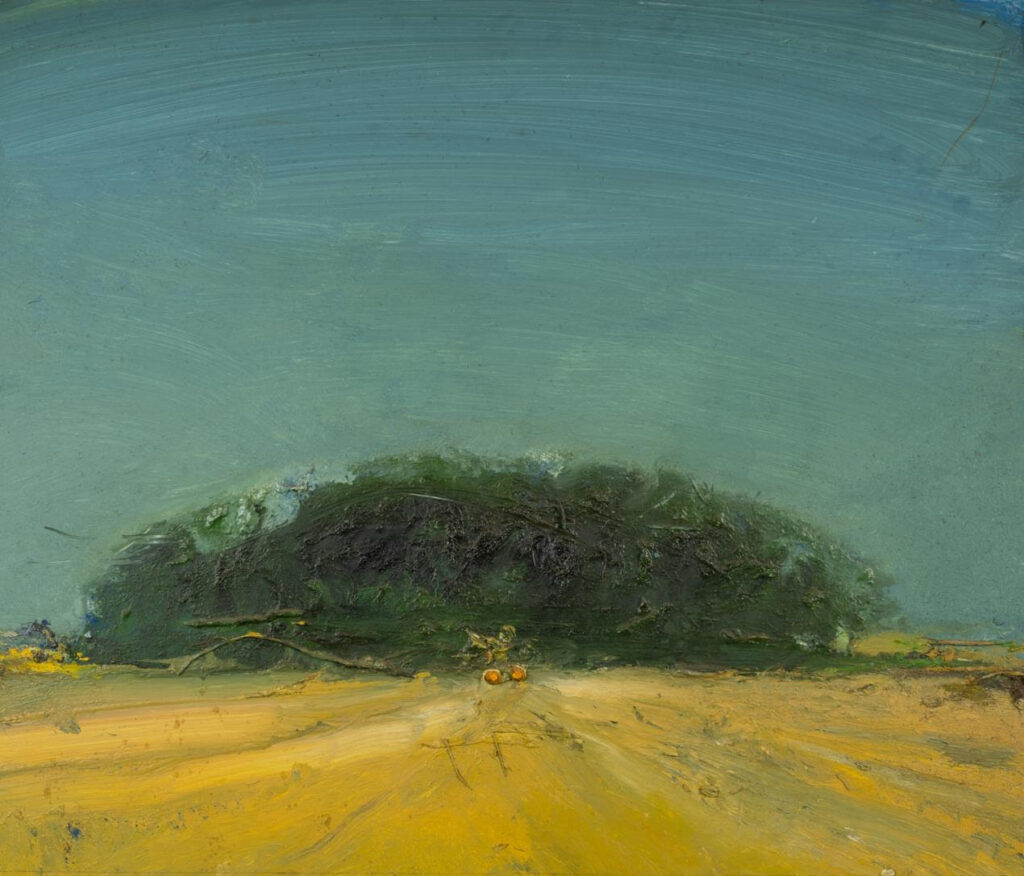
This sensibility is expressed in many drawings and paintings from the 1980s onwards, such as his oil painting ‘Large Harvest Field with two Hay Bales at Happisburgh’ or his drawing ‘Places I Remember’ which captures a seemingly unexceptional spot on the road between North Walsham and Bacton: like the Norwich School artist John Crome who Colin admires, his attention elevates the ordinary to the extraordinary.
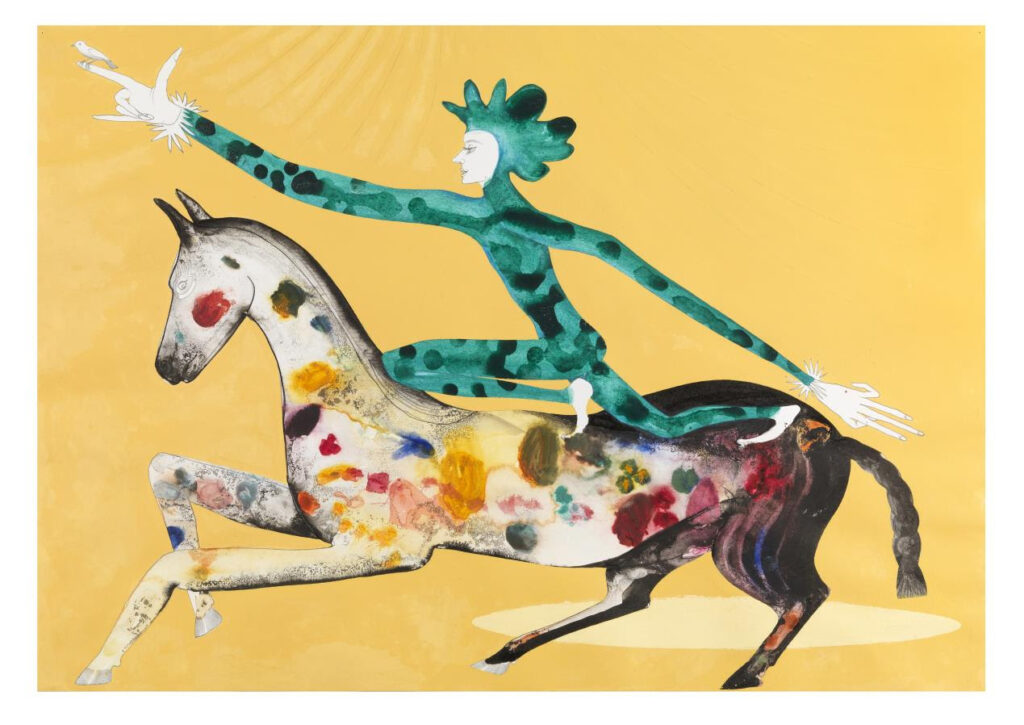
Norfolk also represents family ties and local community. In his vibrant series devoted to circus performers and Norwich characters, the two come together: in ‘Leon Riding on a Circus Horse’ the face of the acrobat is that of his son and the horse itself was coloured by his twin daughters, age three, under ‘loose’ supervision.
The final section, Becalmed, showcases some of Colin’s most recent work from the 2000s onwards. Showing no signs of losing its edge, his work continues to be eclectic and experimental. It includes innovative multi-plate etchings, idiosyncratic collages, a return to shading and the energetic use of spray and fluorescent paints.
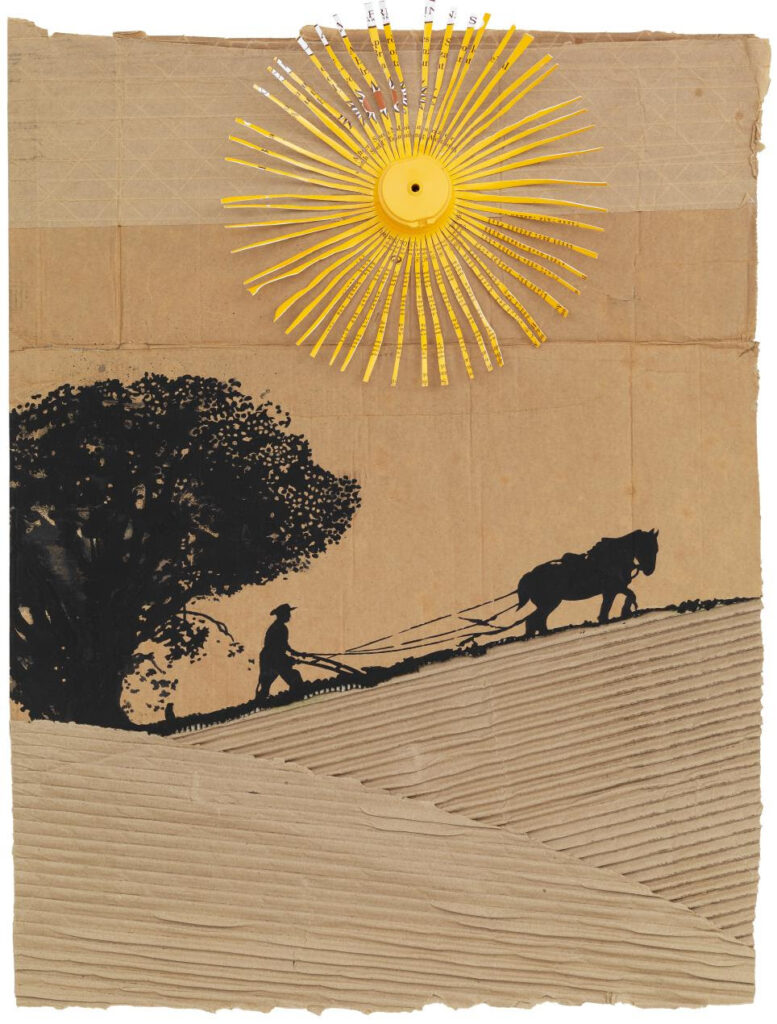
Works on display in this section, including ‘The Ploughman’ from 2006 and ‘Thunderbird’ from 2019, demonstrate Colin’s alchemic ability to turn ordinary materials into art – the former started life as a cardboard box selling cabbages on Norwich Market, while the latter is created from folded out Tick Tock tea packaging. This use of found materials – always a strand in the artist’s work – has become increasingly resonant in the context of the environmental crisis.
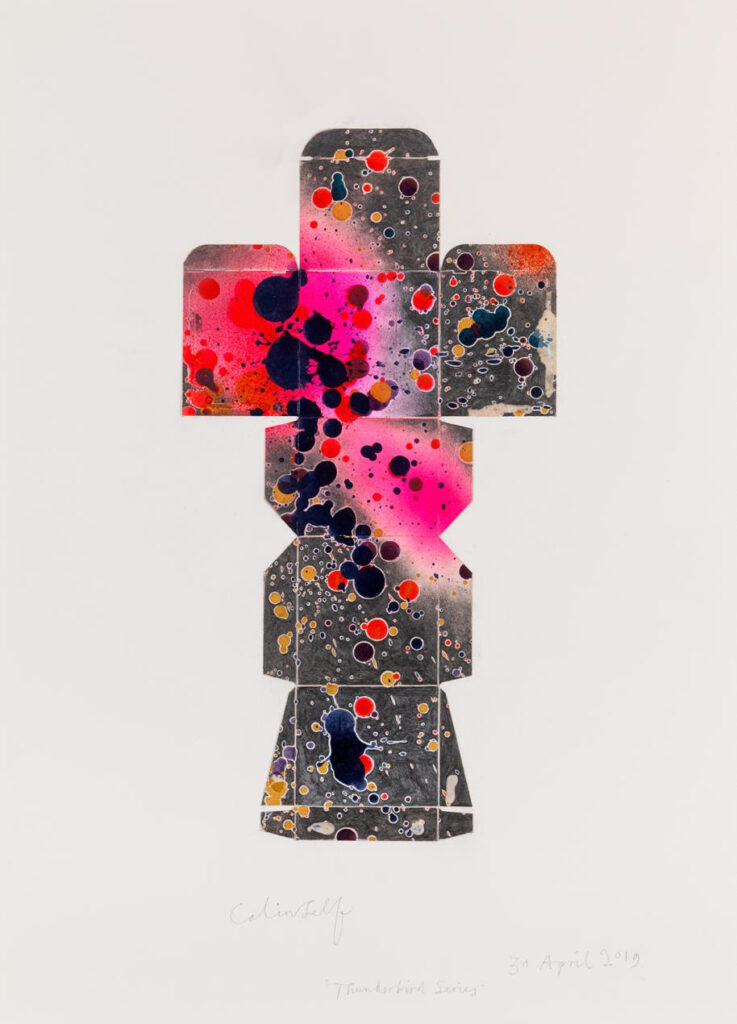
Ideas of the local, over and above the global, find expression in Colin’s canvases of the last five years created by spray-painting ancient woodland plants – including ferns, golden rods and rowans. He named this series The Voltaire Suite after the French writer’s satirical novel Candide (1759) whose central character famously concludes “we must cultivate our garden”, finding contentment in simple pleasures – a deceptively radical message in today’s dislocated world.
Giorgia Bottinelli, Curator, loved every minute of curating the exhibition: “Colin Self is an extraordinary artist and person. His work is original, eclectic and seemingly inexhaustible: the product of a truly boundless imagination. This exhibition is Colin Self’s largest and most comprehensive exhibition to date and presents a wide-ranging selection of exceptional works of art with one thing in common – a sense of Self’s strong social conscience, caustic wit, intelligence, ingenuity and love of life.”
In one far corner of the exhibition is a photograph of Colin sitting in the door of a vehicle, sketching. Asked about how focused he was when he was working outdoors, he replied: “I used to put my forehead on the ground, God’s earth and all that, until I’d sort of blown all the bogey men away and then I’d wake up and start the action.”
One Self: The Creative Life of Colin Self is on show at Norwich Castle Museum & Art Gallery from Saturday 29 March to Sunday 21 September 2025. Included in general admission. Tickets can be booked and further information found at: norwichcastle.norfolk.gov.uk. A full programme of talks and events will accompany the exhibition.
Featured image: Colin Self by Richard Balls




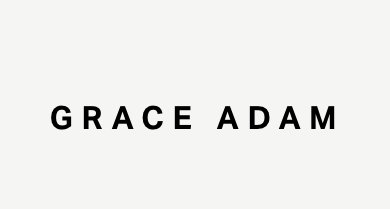

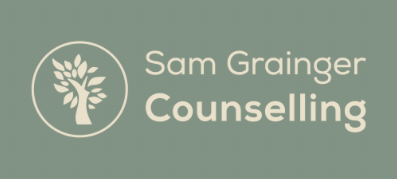


Leave a Reply